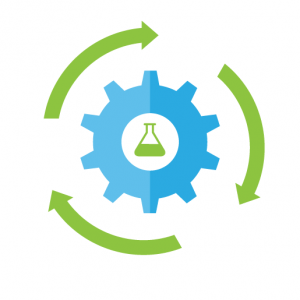By Brandy Neide, MBA, MT(ASCP)
March 03, 2017
In a highly regulated environment like the clinical laboratory, it’s easy to assume that we’ve got things covered when it comes to standardization. The regulations, requirements, and standards that we follow sort of spell things out for us. That doesn’t mean that there isn’t room for standardization within one’s individual lab. At the outset, this may sound like “made-up” work when there is already not enough time in the day. However, standardization actually has its benefits in the day-to-day, and that upfront time investment will pay off great dividends in the long run. Workplace standardization can streamline processes, improve quality, and increase efficiency. Here are a few areas where some fine-tuning can make a big impact.
- Training Program
A training program is an important, yet sometimes overlooked area when it comes to standardization. Many labs are working short-staffed and train people “on the fly”. We are so thrilled to get an extra body in the lab, that we just want to get them trained and on their own as quickly as possible. But it can be detrimental in the long run, and certainly unfair to the new employee, to slap together a training program that is lacking. There are some ways to simplify the process and provide efficient, complete training.- Training processes on each bench should be similar, even if the benches themselves are quite different. The trainer should be consistent throughout the duration of training. Of course, this may be difficult to schedule, but it serves to provide consistency and uniformity.
- The training checklists should resemble one another in format and in content. Use a template so that each bench training sheet is identical from the get-go. Start with the basics such as temperatures, maintenance, and quality control. Then break it down into specific bench responsibilities.
- The training process should be planned and prepared. How many unknowns must be performed? How many slides must be prepared and read? How many samples should be performed? Don’t make these decisions ad hoc, but have a consistent strategy that does not change for each new employee within reason.
- Forms and Documents
Yes, some of us still have to use pen and paper to record temperatures, maintenance, and QC. If so, standardizing the process can help to accomplish this neatly and efficiently. Take a look at your forms. If they are in a binder, do they all face the same direction? Or are you flipping between portrait and landscape? It seems crazy, but choosing a uniform template can shave minutes off each morning. If the QC is done monthly, are you recording this on a separate sheet for each month? Why? Reduce your paperwork and record each month on the same form. Create templates that work for various areas of the laboratory. Have to document a reagent pack change of lot QC? Use one form that is flexible for any change of lot QC. Look for ways to streamline and reduce paperwork and implement templates as much as possible.
- Expectations for Staff
This one might be a little tricky. Managing people is never easy. As we know, individuals are just that—individual. Different. Unique. That being said, the expectations for staff members should be standard, consistent, and constant. Again, the regulatory environment we work in provides some stability and uniformity in this regard, but as a lab manager, there may still be tricky, gray areas to navigate. Don’t be wishy-washy. Don’t make a decision one day that you’ll end up contradicting the next. Provide as much homogenous guidance as possible so that your staff knows what is expected of them. Reduce the gray areas by implementing standard operating procedures and policies that are developed in collaboration with your staff, written clearly and concisely, and understood by those performing the procedures each day. In a nutshell, you provide standardization in the way that you lead and manage your staff.
Once it’s all said and done, standardizing the workflow and processes in the clinical laboratory is not a job for the weak of heart. It may be arduous and prolonged, tedious and grueling. But the benefits of working in a standardized environment will certainly be appreciated by your staff (eventually!) and will be applauded at inspection time. You might find my other blog article, “Competency Compliance 101” also addresses the topic of standardization as it relates to competency compliance. Have you found some ways to improve your laboratory by standardizing certain processes? How have you implemented them and how were they received? I’d love to hear your thoughts and ideas; please share them in the comments section below!
